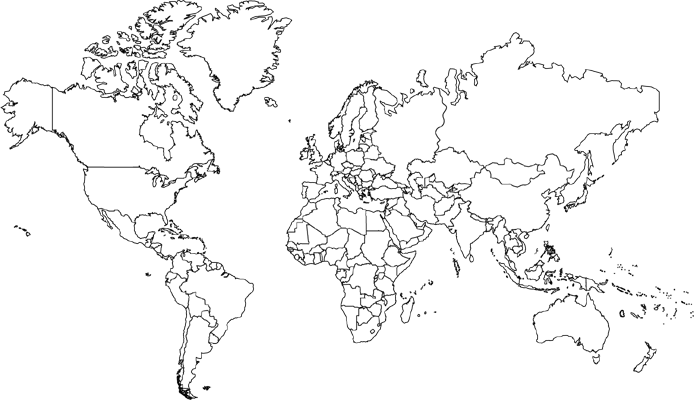
Soleil Ô, the French-Mauritian 1967 drama film directed by Med Hondo was shot over four years with a low budget to discuss the story of African immigrants and their struggle as they made their way to Paris, France. Soleil Ô is the title of a West Indian song that tells of the pain of the black people from Benin who were taken to the Caribbean as slaves. Hondo includes various deeper meanings in the small visual details and interactions throughout the entire film giving it a lighter feel to a heavier topic.
With an ironic and narrative tone, the film begins with what seems to be a brief background on the colonial relationship Africans have had to experience leading to the post-colonial voyage of fleeting to their colonizing country in hopes of a better life. The film begins with the time period in which the Africans were under French Colonial rule in which they were punished for speaking native African languages and the religion is implemented as a social construct as a form of control. These acts become visual representations of the relationship between ‘Colonizer & Colonized’ and ‘Westerners & Easterners.’ A relationship talked about by theorist Edward Said in which colonial rule is justified and advanced by Orientalism, a systematic knowledge in Europe that categorizes the East in which the image of Easterners is of irrational, depraved, childlike, and different placing the Europeans as better than and of supreme nature and is only reinforced by Colonialism. This brief background context ends with the fighting of Africans for the French and more significantly amongst Africans themselves. This scene itself became very representative of Africans as colonial subjects and used by Western Imperial powers for their benefit. For example, many empires used their colonial subjects in World War II, but as the colonizers implemented their culture and values, exploited the people and their resources, they destabilized the original setting causing further issues that have inhibited the progression of Eastern areas to the same level as the West. This has then become the post-colonial reality for many in the East, leading to this longing of security and stability many Easterners feel that the West ‘has’ as talked about in The Stuart Hall Project (2013) by Jon Akomfrah.

The rest of the film follows the struggle of the main character as he moves to Paris to live out his new life. He is presented as a man on the hunt for a new job that quickly learns the life of an African immigrant in the West will be one filled with racism and discrimination due to pre-existing stereotypes and generalizations made about those in the East. These pre-existing generalizations about those in the East are part of this Orientalist narrative pushed by Europeans since those who possess the knowledge, possess the power and authority. They have the power to spread their generalizations and their perspectives on the Eastern people at the moment of meeting during colonialist ventures, but these narratives that place Europeans as superior and rational become the predominant view on Easterners. Also discussed by visual culture theorist Nicholas Mirzoeff, he presents this event as the one of double vision in the moment of encounter between the colonizers and the colonized specifically in 1492 therefore creating the basis for visual culture and modernity itself, as history is written by those in power. The main issue is that Easterners become the ‘subject race’ dominated by another race who supposedly knows them better and knows what is better for them than they know themselves, feeding into this narrative of Easterners as submissive and helpless people that are waiting for Europeans to ‘help.’ Presented in a rather innocent manner, as the African man is seated outside while looking at job postings on the newspaper, a little white girl goes up to him asking if he wants any bread. In theory what is supposed to be a kind act of sharing plays into this predetermined assumption that Easterners have less than Westerns and need the help of the wealthy Europeans since they are doing them a service. Another main stereotype presented in the film is that of African men having big penises shown as a White women actively flirts and chases after the main protagonist only to sleep with him and humiliate him due to this stereotype of the Eastern as the exotic and the sexual.
The man continues to look for jobs and finds himself being discriminated against due to his race in the land of Liberté, Égalité, Fraternité. He is constantly being stared at amongst the crowd for being African due to ‘Negro/Arab Menace’ and the ‘Black Invasion’ that was perceived by the French during the time of the influx of Eastern immigrants. But in the process of attempting to adapt the Western ways, Eastern immigrants become ‘slaves’ in the civilized modern world and cannot seem to escape these preconceived notions leaving them with less opportunities and more events to be humiliated and taken advantage of therefore becoming ‘White Negroes.’ This then makes their assimilation more difficult discussed in the scene with a group of African immigrants giving their different opinions on their hardships, where some even consider going back to Africa after being told things such as, “go home,” and, “we are not the same.” But in a world where the Western narrative has become the general doctrine, how much more insight, opposition, and resistance do Easterners have to undertake to assert true equality or as Capitalism and Neo-Colonialist ventures mix becoming more hidden does equality become a fallacy?





